Let Freedom Ring - Indonesia

Peregrina's Journey
Peter and Margie Benziger
Wed 28 Sep 2011 06:46
We were invited by the Regent of Larantuka to view the August 17,
2011 Indonesian Independence Day Celebration.
The celebration took place in the sports stadium which had a field large
enough to hold the thousand or so participants, all standing at attention in
the broiling heat, including a large band, representatives from the Indonesian
armed forces, several student marching companies, martial arts teams of all
ages, the winners of the various sports and academic trophies and even two prisoners
who were pardoned as an act of amnesty on this special day.
The participants from Sail Indonesia sat with the dignitaries and
military personnel under awnings. Behind
us were the viewing stands filled with a large chorus composed of students from
many schools in the region and hundreds of general observers.

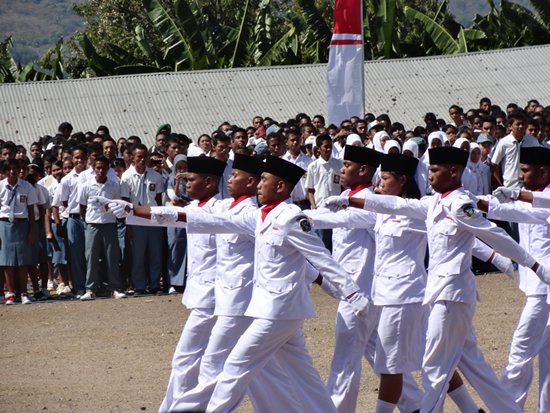
The day was a solemn, yet joyous, day for Larantuka. It was clear that the population was eager to
celebrate Indonesia’s independence because the national flag was flown proudly
in front of businesses, modern city homes and even the most humble bamboo huts in
the countryside.
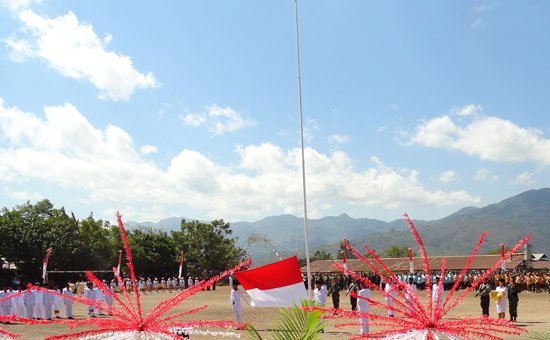
The flag-raising ceremony was wonderful - full of pomp and
circumstance, intricate marching maneuvers, colorful uniforms and time honored
tradition. The Indonesian flag is simple in color. The red stands for courage
and the white for purity.
After the flag was raised and the national anthem sung, the Regent,
who is head of the government in a large portion of the island of Flores, yelled
the word “Freedom” and the entire stadium reverberated with the full-hearted
bellow of thousands of voices yelling “Freedom, Freedom, Freedom.”
The fact that this single word; “Freedom” could mean so much in
Indonesia is a tribute to the people. It is a tribute because Indonesia has not
been the ‘land of the free’ for most of its history.
Indonesia’s history is quite
complicated since it is nation composed of thousands of islands, many different
cultures, different religions (Muslim, Christian, Hindu, Buddhist) and tribal
languages.
For centuries, the inhabitants of Indonesia had, in fact, lost
control of their own destiny.
In the early 1500’s, the Portuguese arrived in Indonesia. They
brought modern weapons and soon dominated both the spice trade and the
Indonesian people. Then in 1605, the
Dutch defeated the Portuguese. The Dutch
did some pretty nasty things such as force the peasants to cultivate selected crops
such as Indigo and sugar (which they then shipped out of Indonesia) instead of the
rice and food products they needed to survive. Famine occurred in certain
areas. In 1811, the British forcefully occupied parts of the Dutch East Indies
but control was returned to the Dutch in 1816. The Indonesians were far from happy
with Europeans but definitely unprepared for the next invader.
In 1942, the Japanese war
machine rolled into Indonesia and with it complete military rule. With
the defeat of the Japanese in 1945, a hastily set up Indonesian government
declared Independence. The Dutch, however,
refused to accept this independence declaration and mounted large scale
offensives to retake what they considered their “Dutch Indonesia.” Finally, with the help of the United Nations,
the Dutch finally left Indonesia in 1949.
Now that Indonesia was officially an independent nation, did that
mean that the Indonesian people had “freedom” as we know it? The answer is, unfortunately, “No.” From
1945 -1955, there were seventeen different government administrations with
constant conflict. It was chaos.
Then, in 1956 President Soekarno, backed by the military, took over.
This was to be the end of any pretence of Western-style, party-based democracy
for the next forty years. President Soekarno dissolved the elected parliament
and replaced it with a parliament appointed by and subject to the will of the President.
A decade later, General Soeharto, the head of the military, arrested
many of the members of Congress and replaced them with his own appointees who,
not surprisingly, elected him as the new President.
Thus began a government know for its corruption, nepotism and even
more repressive civilian rule. One of
President Soeharto’s first rulings was to ban governmental officials from
joining any political party other than his Golkar party. Guess what? He never lost an election for the next 32
years.
Finally, in 1998, President Soeharto stepped down.
In 1999, Indonesia’s first free election in over 40 years
occurred. While today many people say
that Indonesia is on the “road to democracy”, it has proven hard to erase the
decades of corruption and abuse of power both at a central and local level.
Given the fact that Indonesia has been under some form of military
control for centuries, the concept of freedom may differ from what many Western
nations perceive.
So you might ask, what does the word “Freedom” mean today for
Indonesians?
We gained some insight into
the answer when viewing the Independence Day parade which made its way through miles
and miles of the city. The parade went
on for hours with thousands and thousands of participants. The theme was “Our Children are the
Future.” It was fun to watch them
dressed up as doctors, athletes, nurses, teachers, soldiers, fishermen, carpenters,
priests, politicians, rock stars, beauty queens and even fairy princesses.
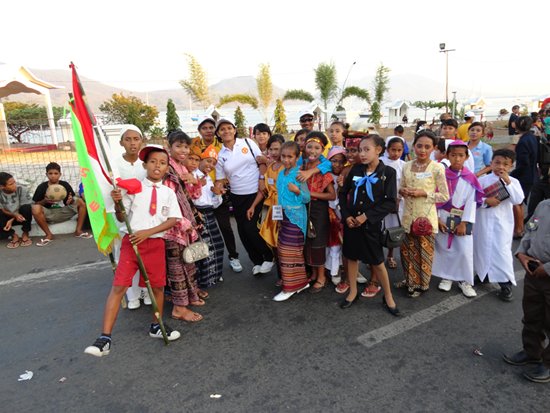
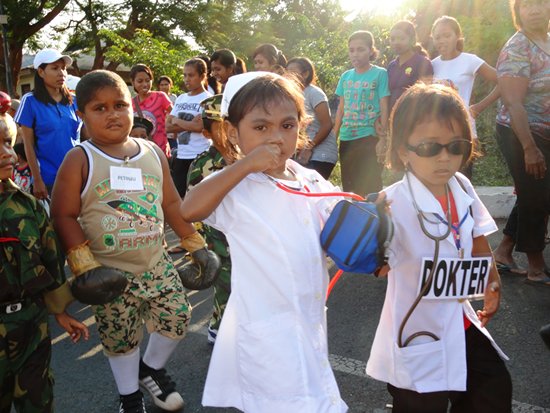
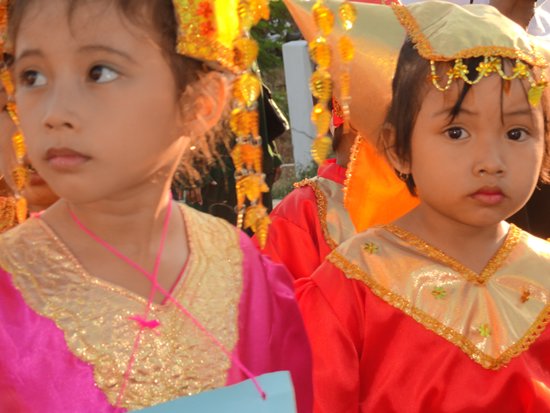

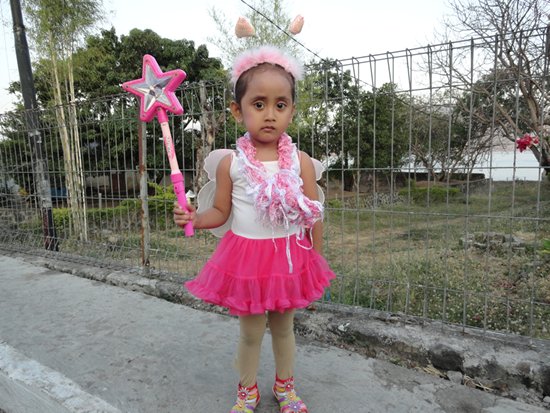
Perhaps the word “Freedom” for Indonesians means hope. For parents,
it is the freedom to hope for a better life for their children, for kids to
hope their dreams come true and for everyone to hope that life can improve day
by day.
Isn’t that what we all hope
for?
Let Freedom Ring.
------------------------------------------------------------------